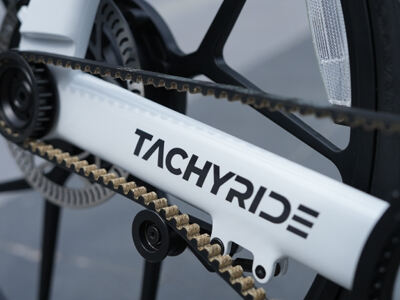Van Traditionele Ritten naar Geavanceerde Ergonomische Oplossingen
In het moderne tijdperk van snelle technologische vooruitgang is vrijwel elk aspect van ons leven getransformeerd. Vervoer, een sector die cruciaal is voor onze dagelijkse levens, is daar geen uitzondering op. Tussen de vele innovaties in dit veld staat de ontwikkeling en evolutie van elektrische fietsen – of e-bikes – er prominent bij. Dit artikel verkent de fascinerende reis van e-bikes en duikt dieper in op de nieuwste doorbraak: Human Mechanics Bicycles, die het beste van traditioneel fietsen combineren met baanbrekende ergonomische ontwerpen.
Een korte geschiedenis van fietsen
De reis van fietsen begon in de vroege 19e eeuw met de uitvinding van de "Draisine" of "hobbyhorse" door Karl Drais. Naarmate de technologie vorderde, evolueerde ook de fiets, door verschillende versies heen zoals de penny-farthing, en uiteindelijk belandde men bij het veiligheidsfietsontwerp dat we vandaag de dag herkennen. De overgang van hout en ijzer naar lichte metalen en precisie-inrichting maakte fietsen niet alleen een vervoermiddel, maar ook een voertuig voor fitness en ontspanning.
De komst van elektrische fietsen
Het idee om menselijke kracht aan te vullen met elektrische ondersteuning is niet nieuw. Reeds in de late 19e eeuw experimenteerden uitvinders met elektrische motoren op fietsen. Pas in de late 20e en vroege 21e eeuw ontwikkelde batterij- en motor technologie zich voldoende om bruikbare e-bikes op de mainstreammarkt te brengen. Moderne e-bikes gebruiken lithium-ion batterijen en efficiënte elektrische motoren om berijders te ondersteunen, waardoor fietsen toegankelijker wordt voor een bredere doelgroep, inclusief mensen met fysieke beperkingen of die lange afstanden moeten afleggen.
E-Bikes: Een symbiotische relatie
E-bikes leggen een balans tussen handwerk en automatische ondersteuning. De pedaal-assist functie biedt kracht proportioneel aan de inspanning van de berijder, waardoor een naadloze rit ontstaat die natuurlijk aanvoelt. Deze hybride benadering maakt het mogelijk om lichamelijke oefening te krijgen terwijl de impact van heuvels en lange afstanden wordt gemoduleerd. E-bikes zijn niet alleen milieuvriendelijk, maar veranderen ook de stadverkeerservaring door een duurzame alternatief te bieden voor auto's en openbaar vervoer.
Welkom bij Human Mechanics Bicycles
De nieuwste innovatie in de wereld van het fietsen is de Human Mechanics Bicycle (MBIKE), die geavanceerde ergonomische oplossingen integreert om de ervaring van de berijder te optimaliseren. Deze fietsen zijn ontworpen met veel aandacht voor de menselijke fysiologie, zodat de fiets in harmonie werkt met de natuurlijke bewegingen van de berijder.
Ergonomisch frameontwerp
Traditionele fietsen dwingen berijders soms in oncomfortabele posities, wat tot spanning en blessures kan leiden. Human Mechanics Bicycles hebben aanpasbare frames en stuurkolommen die verschillende lichaamsbouwen en rijstijlen ondersteunen. De ergonomische ontwerp bevordert een natuurlijke houding, waardoor het risico op rug-, nek- en gewrichtspijn wordt verkleind. Deze innovatie verbetert niet alleen de comfort, maar ook de efficiëntie door ervoor te zorgen dat de energie van de berijder effectiever naar de pedalen wordt overgedragen.
Geavanceerde Veringssystemen
Eén van de belangrijkste kenmerken van Human Mechanics Bicycles is hun geavanceerde veersystemen. Traditionele fietsen met ontoereikende veerkracht kunnen schokken en ongemak veroorzaken op oneffen terreinen. MBIKEs gebruiken echter topveertechnologie die schokken en trillingen absorbeert, waardoor een soepele en prettige rit wordt geboden, ongeacht het oppervlak. Dit maakt ze ideaal voor zowel stedelijke omgevingen als cross-country avonturen.
Intelligente assistentie-functies
Human Mechanics Bicycles gaan verder dan de standaard pedelec-systemen die worden gevonden in conventionele e-bikes. Ze zijn uitgerust met intelligente sensoren die zich aanpassen aan de fietsstijl van de berijder en het terrein. Deze adaptieve systemen bieden op maat gemaakte ondersteuning, met meer kracht bij het beklimmen van bergopwaartse hellingen en energiebesparing op vlakke oppervlakken. Het resultaat is een intuïtief rijden dat bijna voelt als een verlengstuk van het eigen lichaam van de berijder.
De toekomst van het fietsen
Terwijl we naar de toekomst kijken, staat de ontwikkeling van e-bikes en de komst van Human Mechanics Bicycles gelijk aan een belangrijke sprong voorwaarts. Deze innovaties hebben het potentieel om stedelijk vervoer te revolutioneren, waardoor fietsen toegankelijker, comfortabeler en efficienter wordt. Bovendien komen ze perfect overeen met wereldwijde duurzaamheidsdoelen door milieuvriendelijke vervoersmiddelen te bevorderen.
De voortgaande ontwikkeling in dit vakgebied belooft nog opwindender vooruitgang. Met continue verbeteringen in batterijtechnologie, AI-integratie en duurzame materialen ziet de toekomst van fietsen er helder en veelbelovend uit.
Conclusie
Samenvattend illustreert de reis van traditionele fietsen naar elektrische fietsen en nu naar Human Mechanics Bicycles het ongelooflijke vooruitgang in dit gebied. Terwijl we deze nieuwe technologieën omarmen, bewegen we ons richting een toekomst waarin vervoer niet alleen efficienter en milieuvriendelijker is, maar ook ontworpen met de welzijn van de berijder in gedachten. De evolutie van e-fietsen is een getuigenis van menselijke vernuftigheid en onze onvermoeibare zoektocht naar betere oplossingen voor dagelijkse uitdagingen. Met Human Mechanics Bicycles trappen we niet alleen naar onze bestemmingen, maar ook naar een groener, gezonder en ergonomischer toekomst.
Inhoud
- Van Traditionele Ritten naar Geavanceerde Ergonomische Oplossingen
- Een korte geschiedenis van fietsen
- De komst van elektrische fietsen
- E-Bikes: Een symbiotische relatie
- Welkom bij Human Mechanics Bicycles
- Ergonomisch frameontwerp
- Geavanceerde Veringssystemen
- Intelligente assistentie-functies
- De toekomst van het fietsen
- Conclusie



